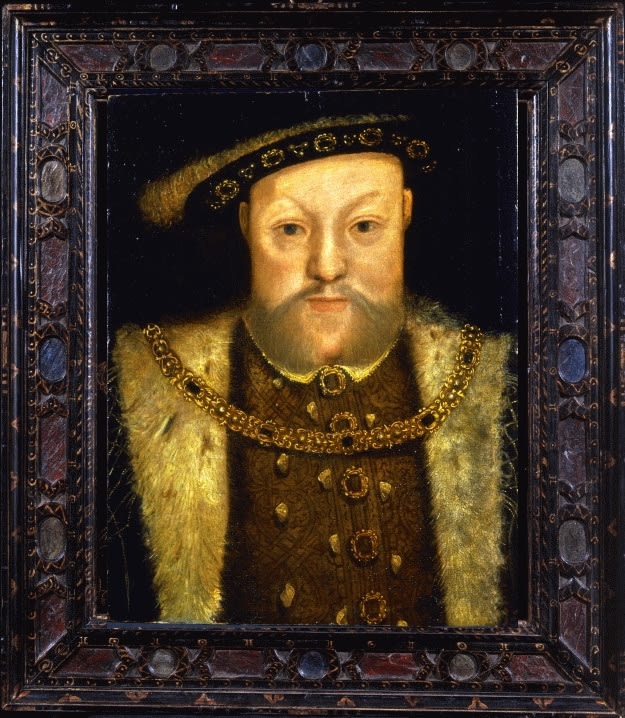
Follower of Hans Holbein the Younger
Portrait of King Henry VIII (1491-1547), 1540s
Oil on oak panel
14 ¼ x 11 in. (36.2 x 27.9 cm)
Philip Mould & Co.
To view all current artworks for sale visit philipmould.com This portrait of the King is one of a number of near-contemporary derivations from the King's portrait in the famous...
To view all current artworks for sale visit philipmould.com
This portrait of the King is one of a number of near-contemporary derivations from the King's portrait in the famous Whitehall Palace mural, executed by Holbein in 1536. The strength of this image, the sheer sense of majesty and physical power -which was said to make supplicants tremble as they waited to be ushered into the Royal presence- guaranteed its popularity for reproduction, both during the King's reign and then, as a mark of loyalty and continuity, in the successive reigns of his children, Edward, Mary and Elizabeth.
Unlike many versions of this portrait, executed towards the end on the sixteenth and beginning of the seventeenth centuries, the scale, pigment tone and characterisation date this example to the earliest phase of the corridor portrait phenomenon, c. 1560-75.
This portrait of the King is one of a number of near-contemporary derivations from the King's portrait in the famous Whitehall Palace mural, executed by Holbein in 1536. The strength of this image, the sheer sense of majesty and physical power -which was said to make supplicants tremble as they waited to be ushered into the Royal presence- guaranteed its popularity for reproduction, both during the King's reign and then, as a mark of loyalty and continuity, in the successive reigns of his children, Edward, Mary and Elizabeth.
Unlike many versions of this portrait, executed towards the end on the sixteenth and beginning of the seventeenth centuries, the scale, pigment tone and characterisation date this example to the earliest phase of the corridor portrait phenomenon, c. 1560-75.
Be the first to hear about our available artworks
* denotes required fields
We will process the personal data you have supplied in accordance with our privacy policy (available on request). You can unsubscribe or change your preferences at any time by clicking the link in our emails.